How Do Weeds Grow? Why They Spread So Fast & How to Stop Them
How do weeds grow so fast—and why do they always seem to pop up where you don’t want them? Whether it’s dandelions dotting your lawn, crabgrass creeping into garden beds, or bindweed taking over, weeds have an uncanny ability to spread, survive, and thrive.
Now, I’ll admit—I don’t mind a few dandelions. They’re one of the first food sources for bees in early spring, and I’d rather let them bloom than strip away an essential pollinator-friendly plant. But I know plenty of lawn enthusiasts who see them as enemy number one. If you’re looking to understand how weeds grow, why they’re so persistent, and how to keep them in check, this guide covers everything you need to know.
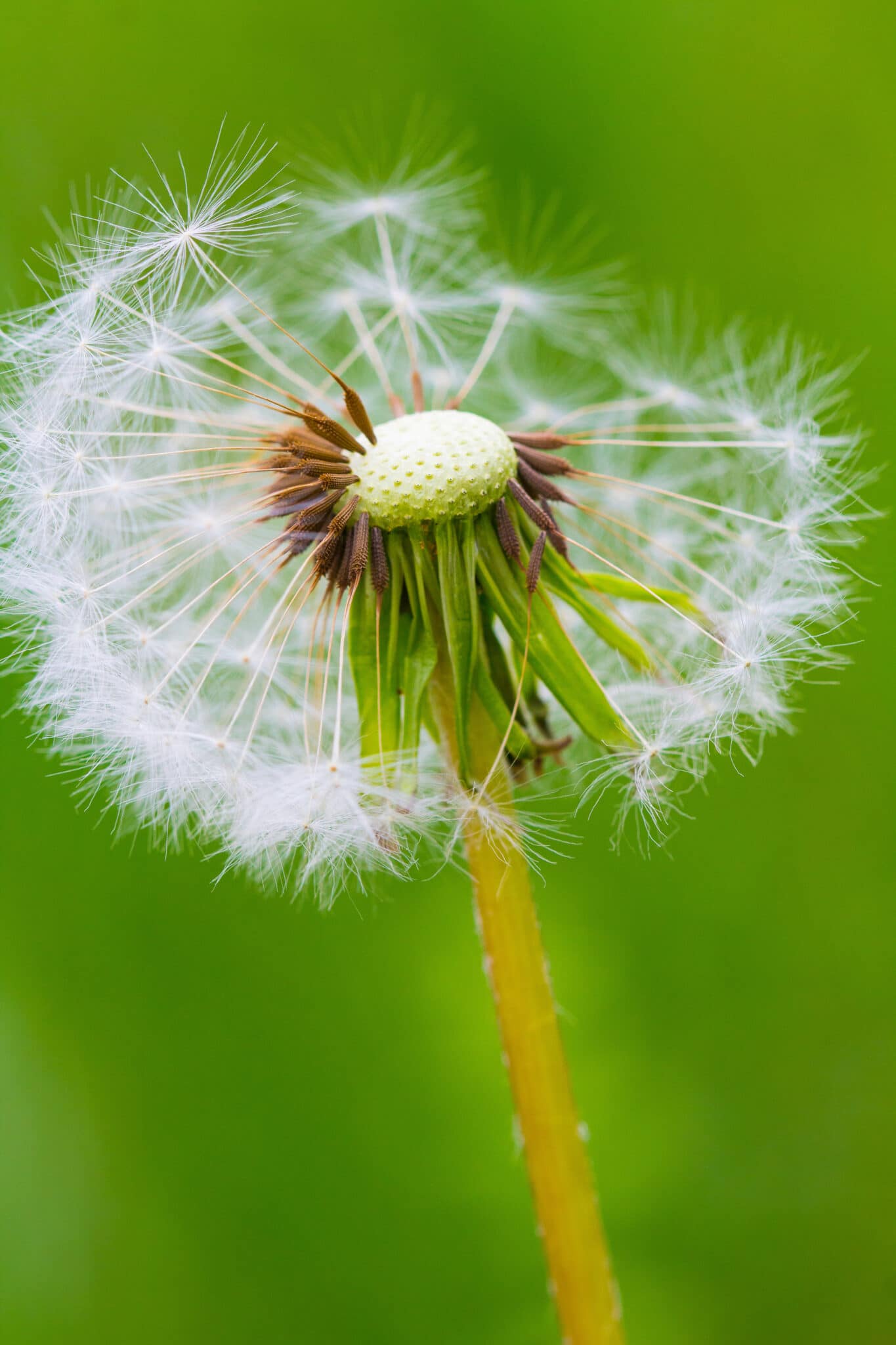
Affiliate Disclosure
This post may contain affiliate links. If you click one and purchase, I may receive a commission at no additional cost. You can read our disclosure policy here.
Identifying Weeds and Why They’re a Problem
So, what is a weed?
My mom told me many years ago that gardeners typically define weeds simply as plants that are growing where they aren’t wanted. Sure, there are common types of weeds (I’m lookin’ at you dandelions, bindweed, and crabgrass), but even plants you really like can become weeds if they start taking over and growing in areas where you don’t want them to grow.
Taking a deeper look at weeds and their purpose might help us arm ourselves with some knowledge for controlling weeds more effectively. That way, you won’t be stalking every little dandelion plant to rip it out of the ground like I’ve been known to do.
Why Do Weeds Grow Faster Than Garden Plants?
If you’ve ever spent weeks carefully tending to seedlings, only to watch weeds shoot up seemingly overnight, you’re not imagining things—weeds really do grow faster than most garden plants. But why?
- Survival-First Growth – Weeds have evolved to germinate quickly and aggressively so they can take over disturbed soil before other plants have a chance. Many start growing as soon as temperatures are right, while garden plants often need more specific conditions.
- Deep or Spreading Roots – Many weeds have taproots that dig deep for water or sprawling root systems that let them spread fast. This gives them a survival advantage in tough conditions.
- More Seeds, More Problems – Weeds are prolific seed producers, with some species releasing thousands of seeds per plant. These seeds often stay dormant in the soil for years, waiting for the right moment to sprout.
- Built to Thrive, Not to Taste Good – Unlike vegetables, which have been bred for flavor and size, weeds have one goal: grow as fast as possible and reproduce before being removed.
This is why staying ahead of weeds is key—the longer they’re left unchecked, the more they spread. A combination of prevention and regular maintenance is the best way to keep them from taking over!
Grab Our Ultimate PRINTABLE Garden Planner
With 39 pages of planning and organizing and the ability to customize your planner with the pages you need, you won’t need another planner for the rest of your gardening life!
$4.99 US

How do Weeds Grow?
When we look at weeds from Mother Nature’s point of view, they’re simply a means of filling in an area where other plants aren’t growing. Yes, some are unsightly; but some are actually kind of pretty.
This is where Mother Nature and gardeners sometimes find themselves in disharmony. If weeds only took up a little space, gardeners might not spend so much time and energy keeping them out of their gardens.
Unfortunately, weeds are slightly more menacing than looking ugly or taking up just a little space.
They’re usually plants that reproduce and spread quickly, often taking over our gardens or lawns seemingly faster than we can take of them. Even worse, they compete with desirable plants for water and nutrients which can starve out and kill the plants we really do want to grow.
How do Weeds Spread?
Weeds have evolved various strategies to ensure their survival and proliferation:
- Seed Dispersal Methods: Weeds disperse their seeds through wind, water, animals, and human activity. For instance, dandelion seeds are equipped with parachute-like structures that allow them to be carried long distances by the wind.
- Vegetative Reproduction: Many perennial weeds can reproduce from fragments of roots, stems, or leaves. This means that even a small piece of root left in the soil can give rise to a new plant.
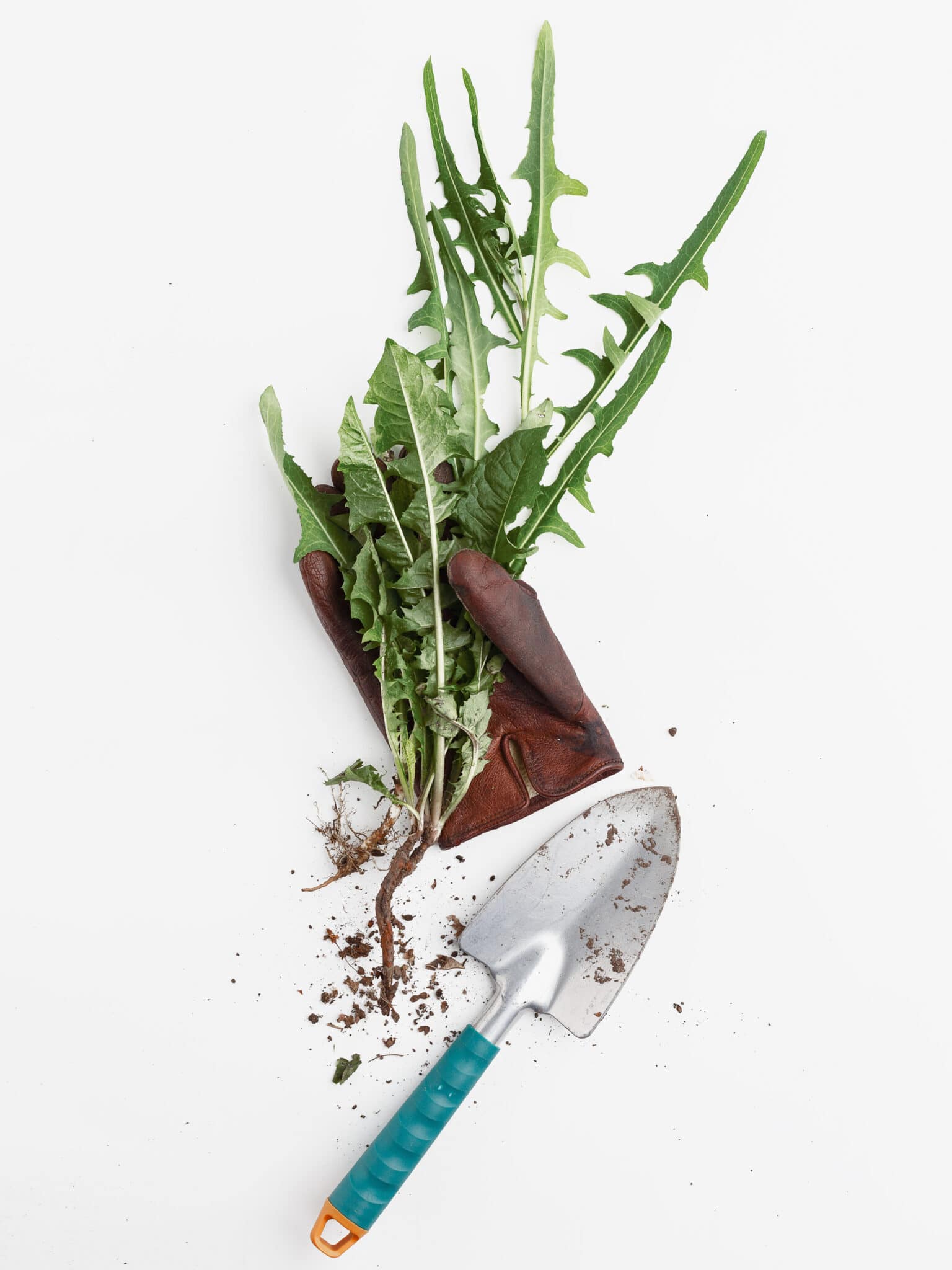
Types of Weeds
Weeds are categorized based on their life cycles:
- Annual Weeds: Complete their life cycle within a single year. They germinate, grow, flower, set seed, and die within one growing season. Examples include crabgrass and chickweed.
- Biennial Weeds: Have a two-year life cycle, producing vegetative growth in the first year and flowering in the second. Wild carrot and clover are common biennial weeds.
- Perennial Weeds: Live for multiple years, often spreading through both seeds and extensive root systems. They can lay dormant during unfavorable conditions and regrow when conditions improve. Dandelions and thistles are typical perennial weeds.
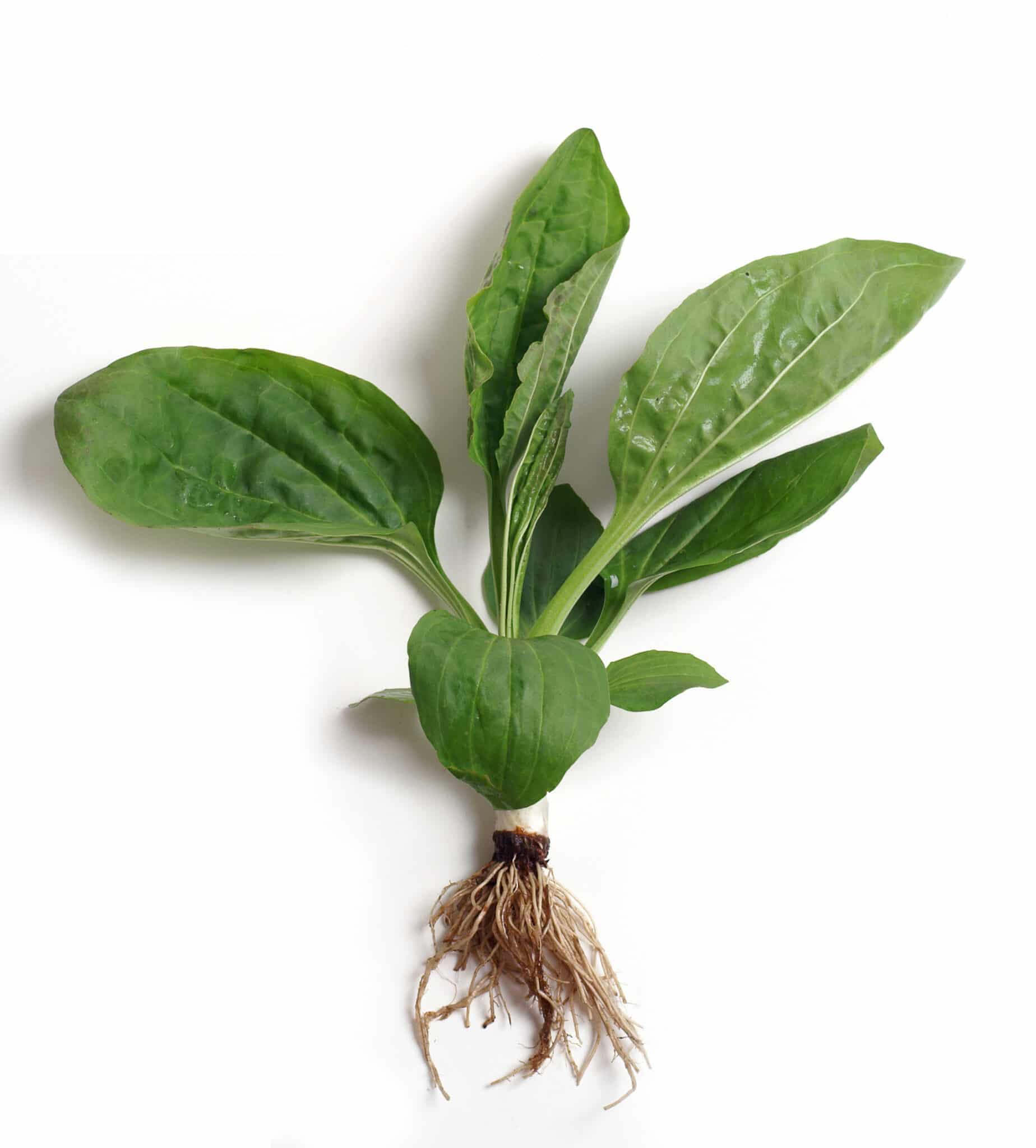
How Weeds Grow: Tips for Prevention
If you want to keep your garden and your lawn healthy, it’s time to get a handle on your weeds. I have some tips to help you effectively control weeds and reduce the amount of time and labor you spend pulling them so you can get back to enjoying your garden.
There are three main ways to control weed growth:
- Chemical Control
- Manual Removal
- Preventative Measures
Since I avoid chemical control methods due to their potential harm to pollinators, soil health, and beneficial plants, I focus my time and energy on the other two methods.
Pulling weeds by hand can be time-consuming and labor-intensive, and while prevention methods help reduce weeds, they don’t eliminate them entirely. That’s why I’ve found the best approach is a combination of both—staying on top of weeds before they spread while using smart prevention techniques to keep new ones from taking over. It’s a little extra effort upfront, but it makes long-term weed control so much easier!
Pro Tip: Removing weeds before they go to seed drastically reduces how many pop up next season!
Minimize Soil Disturbances
Weed seeds are actually sitting throughout the soil in your entire yard and garden right now. I try not to think about it. However, only the seeds that reach the top couple of inches of dirt get enough light to germinate.
Unfortunately, they can remain dormant for a very long time until you disturb the dirt and give them the light they need.
To minimize this in your garden, only dig when and where you need to.
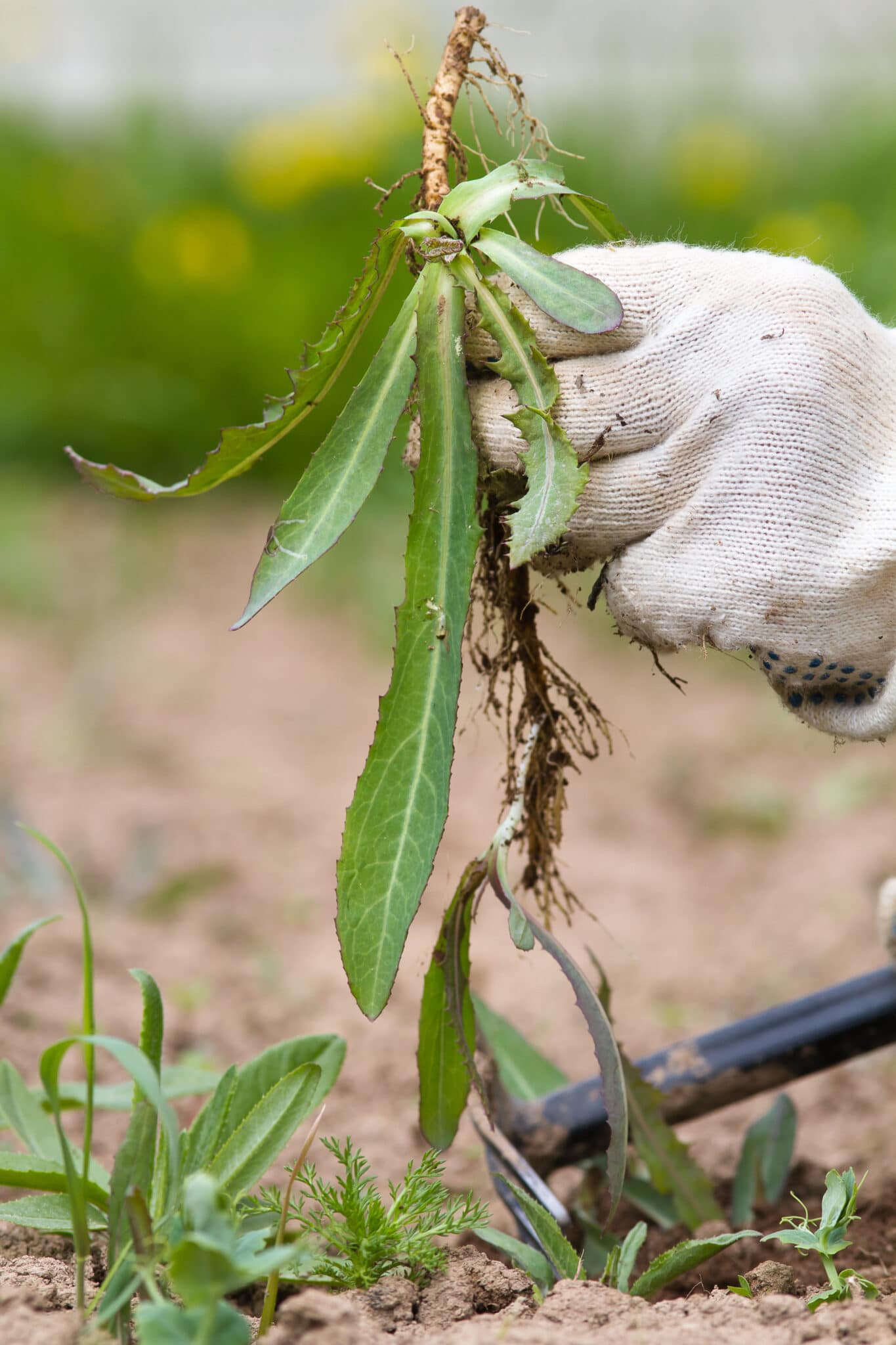
Weed When Wet
My mom showed me this trick years ago!
If you pull weeds when the soil is damp (not soggy), they come up easily. On the other hand, if you try to pull them up when the ground is very dry, they stick like glue.
In order to get them up at that point, you have to dig them out which disturbs the soil more.
Instead, pull weeds when the ground is wet: after a rainstorm, after the sprinklers run, or wet the ground with your water hose. They’ll come up with less work and (you guessed it) minimize soil disturbances.
Remove the Tops
I would recommend approaching lawn weeds differently. A cool trick I learned to use for your lawn is to slice through the roots of lawn weeds with lawn shears (or other garden tools such as a hoe) rather than pulling them out and giving the new weed seeds access to light.
Slicing through the roots cuts off the source of food and nutrients so they die. I had been tackling my dandelion problem the wrong way for years!
When it comes to tougher weeds that have deep roots like bindweed, this method won’t kill the weed. However, it will keep them from taking over and reduce or delay their ability to seed, effectively keeping them at bay. And eventually, they may give up (or at least that’s what I tell myself).

Fill in Bare Spots
Remember what I said about the purpose of weeds from nature’s perspective? They fill in bare spots. Instead of letting weeds do this job, take control and fill in bare spots in your garden or your lawn with the plants that you want growing there.
With more competition for space and resources, weeds won’t grow well!
Low on space? Check out our guide to gardening in small spaces.

Invest in Mulch
Using mulch has many advantages, both in preventing weeds and benefiting desirable plants.
Here are just a few benefits of adding mulch to your garden:
- Deprives weeds of necessary light
- Can host garden-friendly bugs, which will eat many kinds of weeds
- Keeps the soil moist and cool, nourishing the plants you want to grow
- Covers up bare spots, which would be a prime growing area for weeds
Pro Tip: Mulch alone can let patches of light through, allowing weeds to grow even though you have mulch there. Weed barrier prevents this and acts as a one-two punch with your mulch to effectively keep many weeds at bay!
Use Weed Barrier for Long-Term Weed Control
A weed barrier is one of the easiest ways to prevent weeds before they start, but choosing the right type makes all the difference. While plastic landscape fabric is great for permanent areas like pathways, I prefer biodegradable weed barrier paper for garden beds. It breaks down naturally, won’t tangle in your tiller years later (when you forget that it’s there…), and some even come with added nutrients to enrich the soil as they decompose.
How to Use Weed Barrier Effectively
- Lay it down over your garden bed before planting.
- Cut holes for your plants to grow through—this keeps weeds out while allowing your crops to thrive.
- Cover it with mulch (like straw or bark) to help hold it in place and provide extra weed suppression.
If you’re looking for a more long-term solution for paths or walkways, woven landscape fabric holds up well and can be covered with gravel or mulch for a cleaner, weed-free surface.
Only Water Your Desirable Plants
Weeds can only grow if they have both light and water. If you deprive them of one or both of these things, they aren’t able to grow.
Using landscape fabric is one way to help prevent light from reaching them. In addition, selectively watering only the plants you want to grow further reduces weeds from being able to germinate. This prevention method is especially effective in drier climates where plants often depend on human watering methods.

When Your Soil Order Brings More Than Just Nutrients
I learned the hard way that not all soil is created equal. A few years ago, we ordered what we thought was high-quality bulk soil for our garden beds. Turns out, it was loaded with weed seeds—and not just any weeds. Crabgrass and hairy vetch took hold almost immediately, and despite our best efforts, we’re still battling them today.
This experience taught me just how important it is to source soil from a trusted supplier. Here’s what you need to know to avoid the same mistake:
Choosing a Reliable Soil Source
When buying soil, whether in bulk or in bags, do your research on the supplier.
- Ask about how the soil is processed – Some companies screen and heat-treat their soil to kill weed seeds, while others don’t.
- Look for reviews or recommendations – If other gardeners have had issues with weeds, there’s a good chance you will too.
- Avoid “cheap fill dirt” unless you know its source – It’s often taken from construction sites and may be contaminated with weed seeds or even chemicals.
Bagged Soil vs. Bulk Soil: Which Is Better?
If you’re filling a large space, bulk soil is often the more affordable option—but as I learned, it can also come with hidden problems. Commercially prepared bagged soil is typically:
- Screened for weeds – Reducing the risk of contamination.
- Consistently blended – Giving you a balanced mix of nutrients.
- Convenient for small spaces – No need for a giant pile of dirt in your driveway.
That said, if you do go with bulk soil, consider solarizing it before use—spreading it out and covering it with clear plastic for several weeks in the sun. This can help kill off weed seeds before they take root in your garden.
Bringing in fresh soil should help your garden thrive—not introduce a whole new weed problem. Learning from my experience, I always ask questions before ordering bulk soil and sometimes stick with bagged soil for smaller projects to be safe. A little extra caution upfront can save years of frustration pulling weeds!
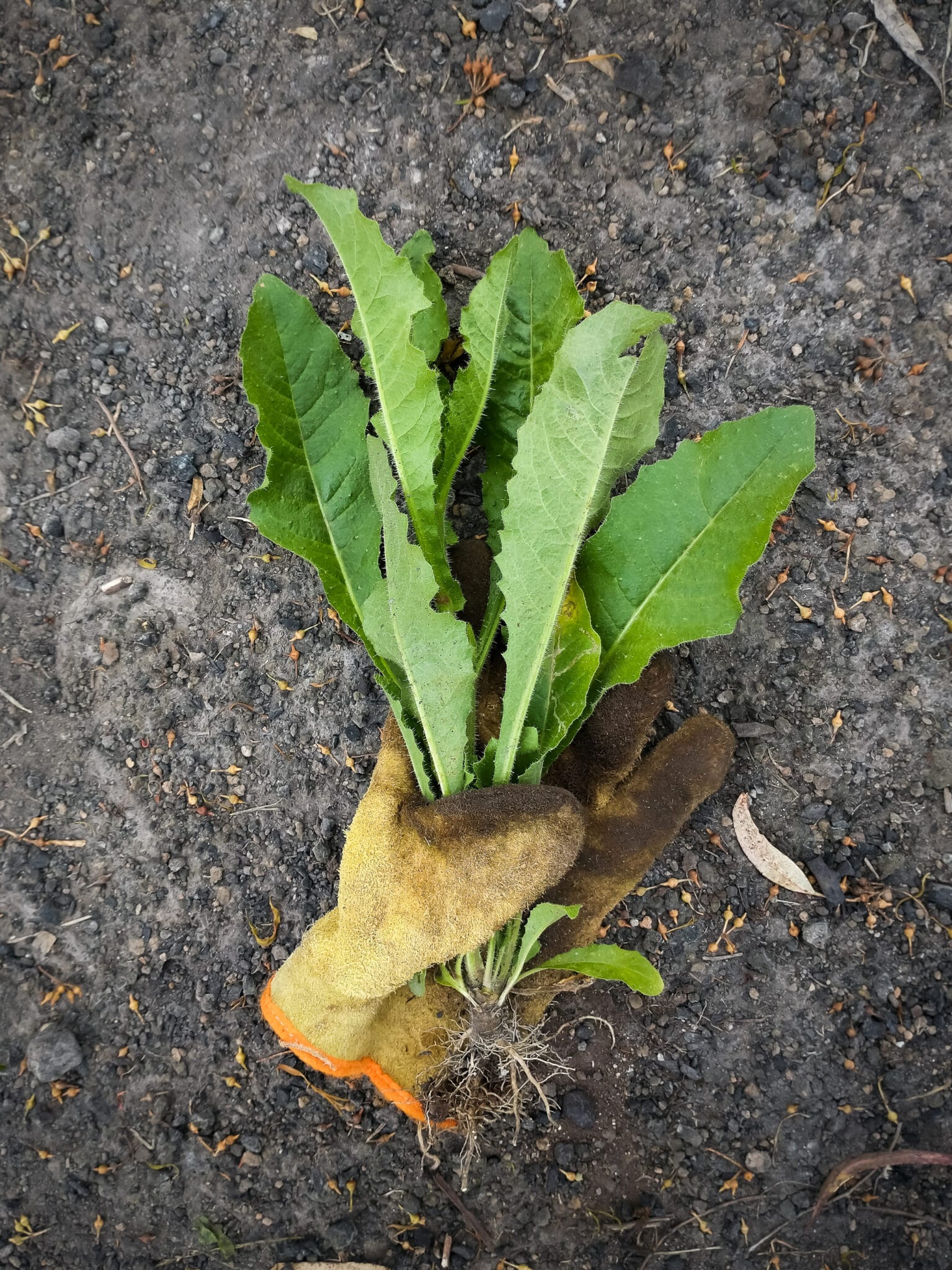
Final Thoughts on How Weeds Grow
Knowing how to identify and, more importantly, control your weeds is important for the health of your garden. I hope these tips help you keep your weeds under control with less time and effort!
What’s your go-to method for dealing with weeds? Drop a comment below and share your best tips! And if you found this guide helpful, spread the word by sharing it with fellow gardeners—because we all know the fight against weeds is easier with a bit of help!
More Gardening Posts You’ll Love

Author: Laura Kennedy
Writer & Owner of Little Yellow Wheelbarrow
Laura is a highly skilled gardener and fervent flower enthusiast. Despite her playful battle with plant spacing guidelines, Laura’s work inspires gardeners to create thriving, beautiful spaces that reflect both creativity and sustainability.
Editorial Note: This article was originally published on April 1, 2021. It was updated on January 15, 2025 to include more information and improve readability.










